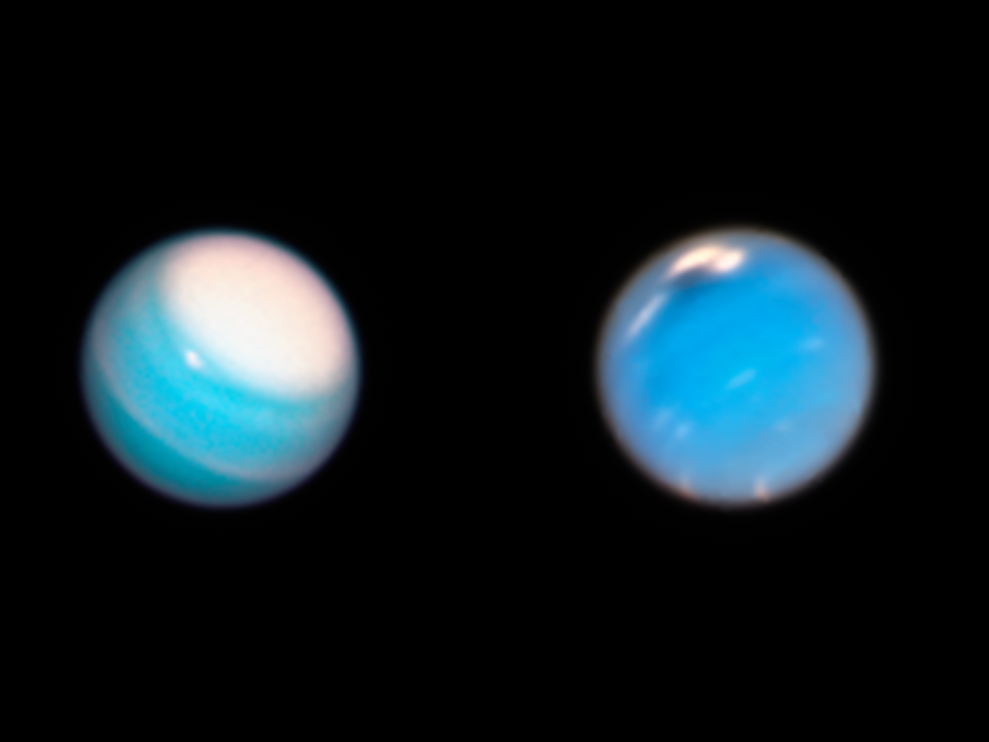Nasa spots mysterious storm clouds gathering over Uranus and Neptune
Images from Hubble space telescope reveal unusual weather patterns on giant gas planets

Your support helps us to tell the story
From reproductive rights to climate change to Big Tech, The Independent is on the ground when the story is developing. Whether it's investigating the financials of Elon Musk's pro-Trump PAC or producing our latest documentary, 'The A Word', which shines a light on the American women fighting for reproductive rights, we know how important it is to parse out the facts from the messaging.
At such a critical moment in US history, we need reporters on the ground. Your donation allows us to keep sending journalists to speak to both sides of the story.
The Independent is trusted by Americans across the entire political spectrum. And unlike many other quality news outlets, we choose not to lock Americans out of our reporting and analysis with paywalls. We believe quality journalism should be available to everyone, paid for by those who can afford it.
Your support makes all the difference.Mysterious storms have been spotted raging on the surfaces of Uranus and Neptune in an annual check-up of the planets carried out by Nasa.
Every year, the Hubble space telescope takes photos of the solar system’s gas giants as part of a programme to help better understand the four planets.
In its latest survey it revealed Uranus’ north pole was entirely covered by an enormous “bright stormy cloud cap”.
Meanwhile Neptune has developed a dark vortex measuring about 6,800 miles across, similar to previous events captured by the Voyager 2 spacecraft in 1989 as it flew past the distant planet.
Uranus and Neptune have seasons just like on Earth, but instead of lasting mere months they tend to span decades.
Scientists think the storm clouds gathering over Uranus are a combination of seasons progressing and an unusual feature of the giant planet.
Unlike the other planets that make up the solar system, Uranus is tilted to the side meaning that during the summer the sun shines on the north pole almost exclusively, never setting.
With the planet now reaching the middle of its summer and the polar cap storm seeming to become more prominent, experts think the changes may result from this seasonal shift which influences movements in the atmosphere.
It is unclear how storms form on Neptune, although scientists think the initial vortices begin to swirl deep in the planet's atmosphere, closer to the core, before reaching higher altitudes and becoming visible at the surface.
As Hubble continues to take snapshots of these remote planets, experts hope they will be able to build up a clear picture of weather patterns on these faraway worlds.
Ultimately this could make it possible to make predictions about trends in a similar manner to meteorologists working on Earth.
Join our commenting forum
Join thought-provoking conversations, follow other Independent readers and see their replies
Comments